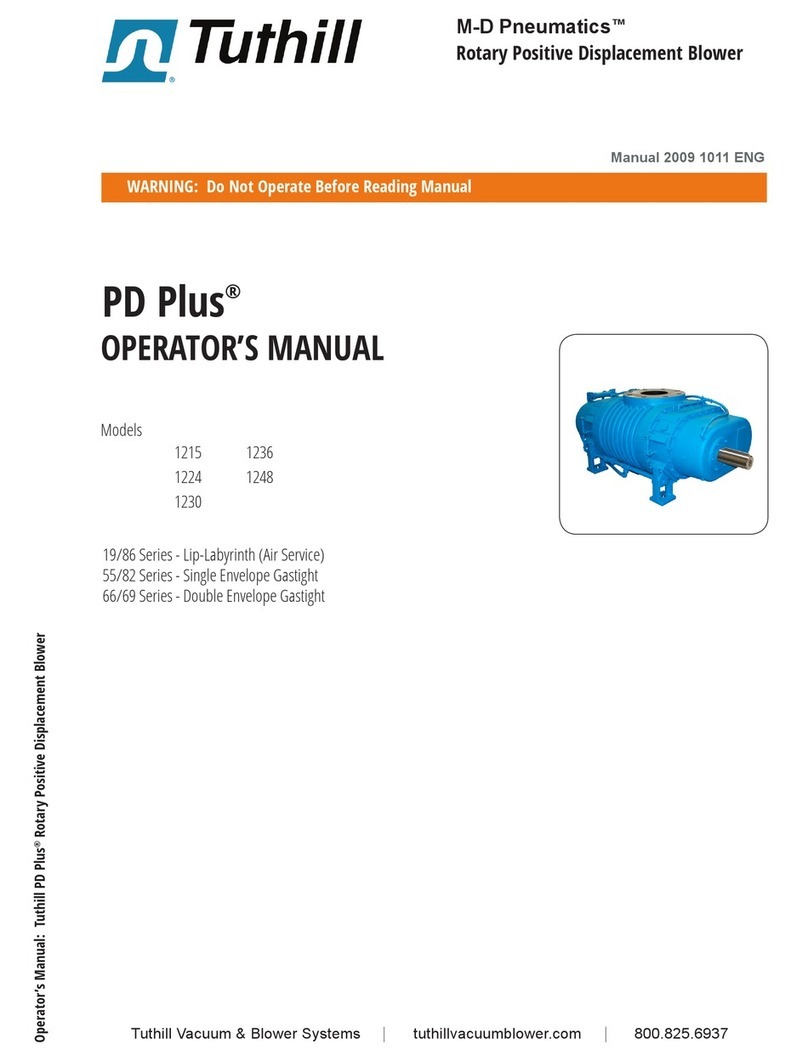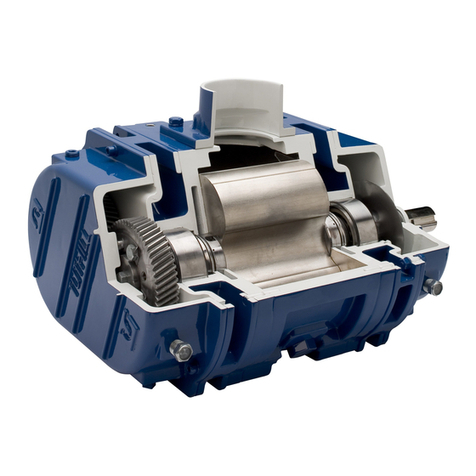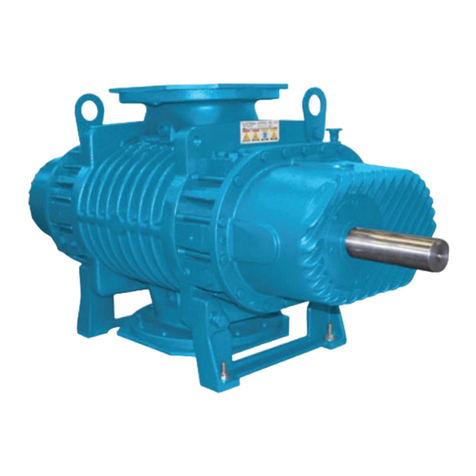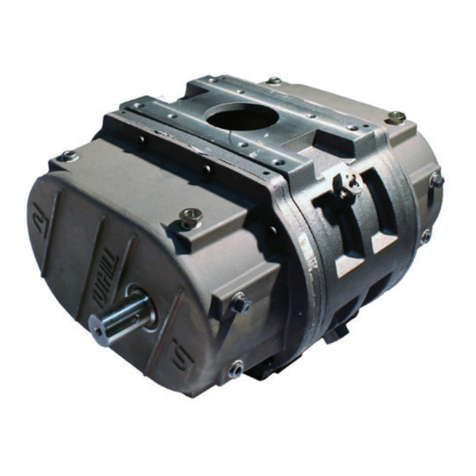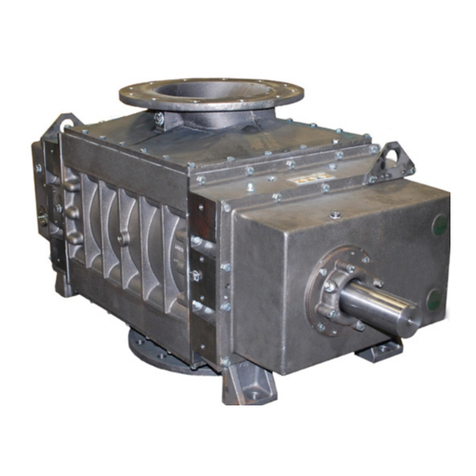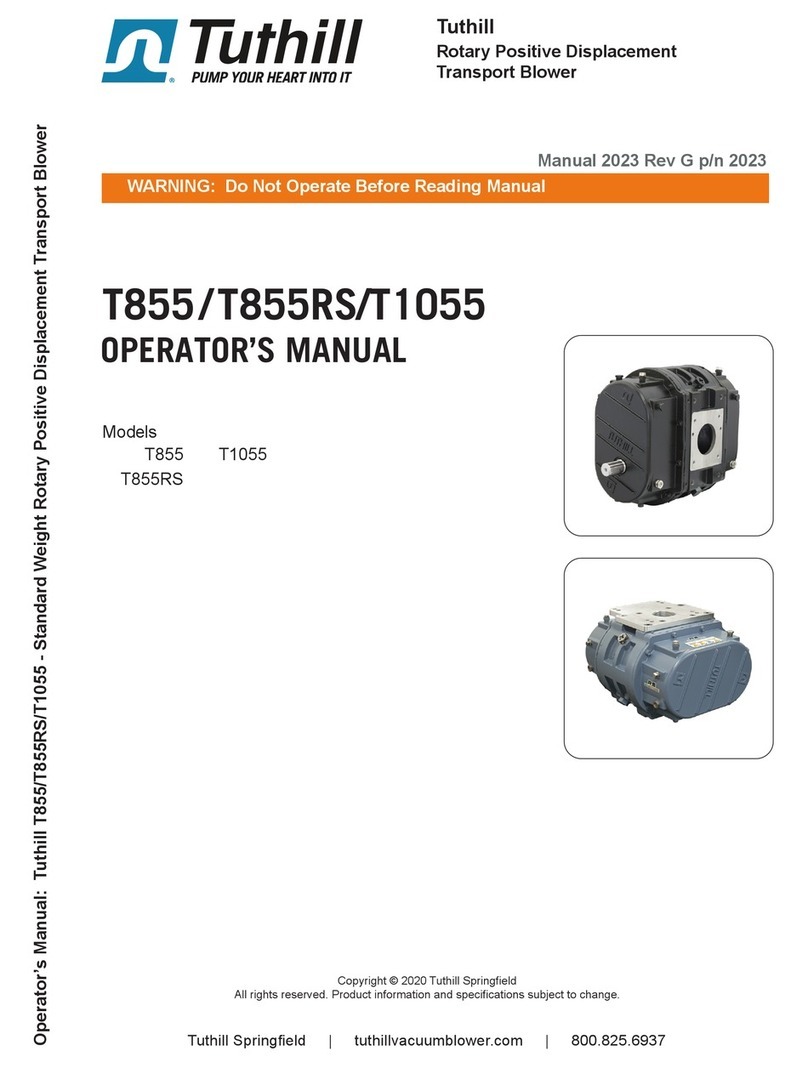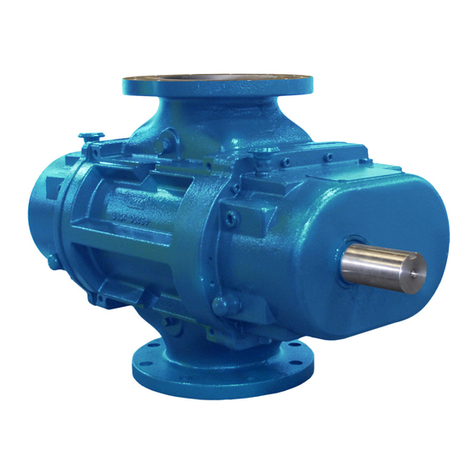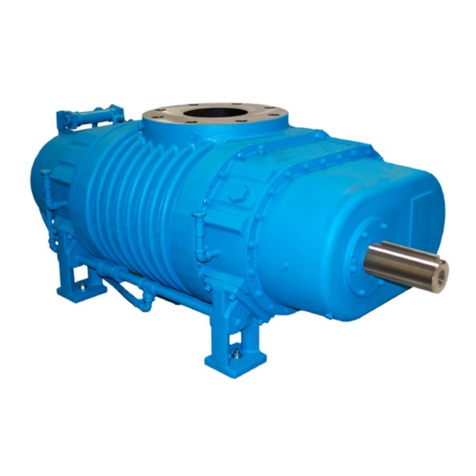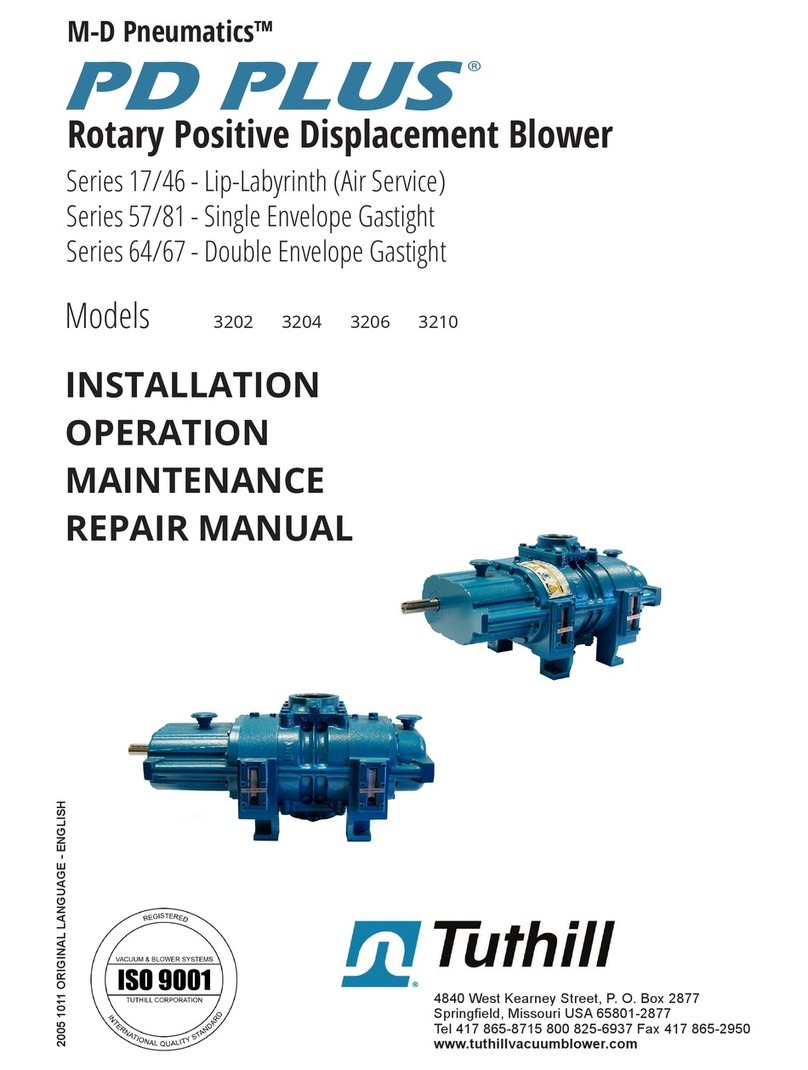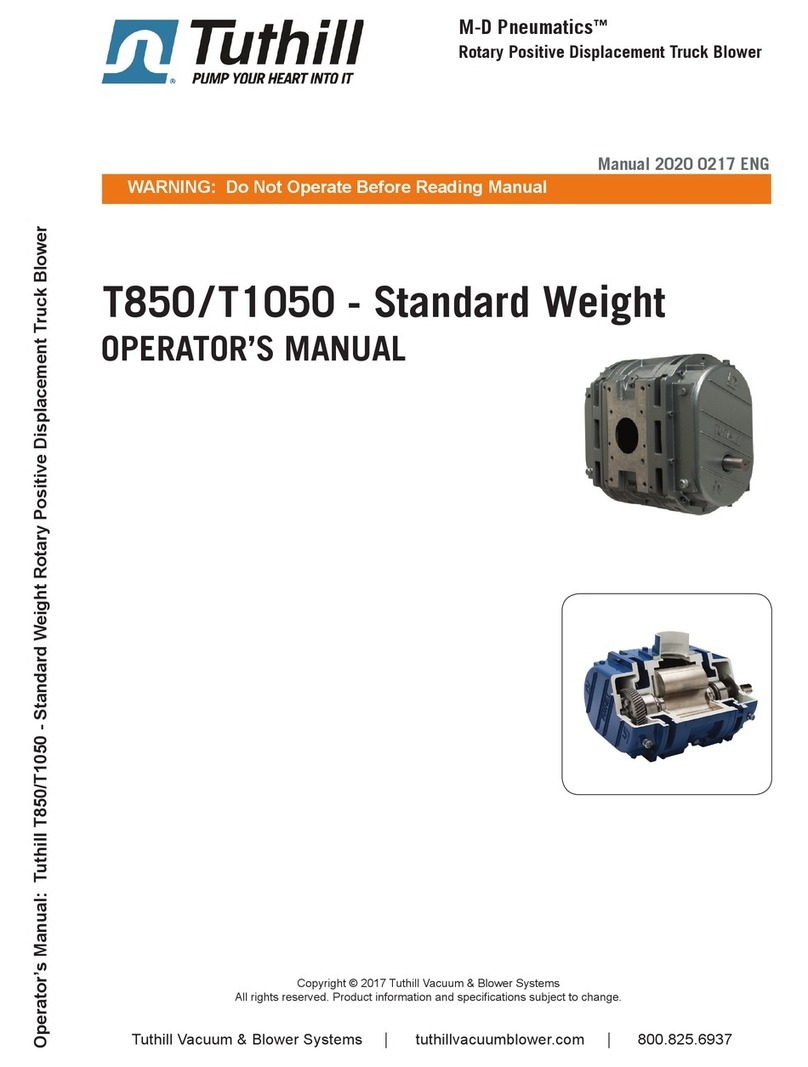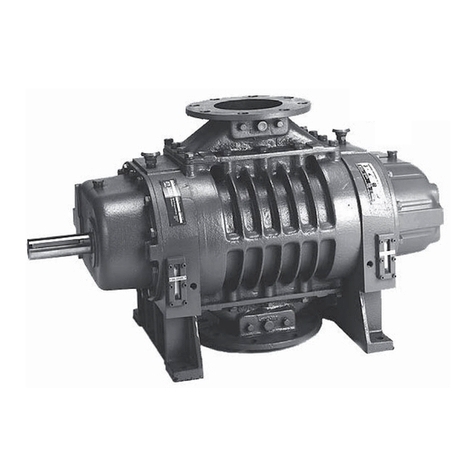
Manual 2017 Rev C p/n 2017
ii
Table of Contents
Frequently Asked Questions Regarding Lubrication ............... 17
Hazards Associated With Breakdown or
Ignition of Lubrication .............................................................. 17
Release Lubricated Bearings –
Grease Lubrication Series Only ............................................... 17
Piping Connections............................................................................. 18
Hazards Associated With Hazardous Process Fluids.............. 18
Blockage or Restriction ............................................................ 18
Motor Drives........................................................................................ 19
Direct Coupled ......................................................................... 19
V-Belts ...................................................................................... 19
Setting V-Belt Tension............................................................... 20
V-Belt Troubleshooting ............................................................. 21
Motor and Electrical Connections....................................................... 22
Operation.................................................................................... 23
General ............................................................................................... 23
Start-Up Checklist............................................................................... 24
Stopping.............................................................................................. 25
Recommended Shutdown Procedure to Minimize
Risk of Freezing or Corrosion ............................................................. 26
Maintenance............................................................................... 27
General ............................................................................................... 27
Regular Maintenance.......................................................................... 27
Spare Parts ......................................................................................... 28
Factory Service and Repair ................................................................ 28
Long-Term Storage ............................................................................. 29

